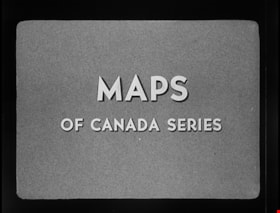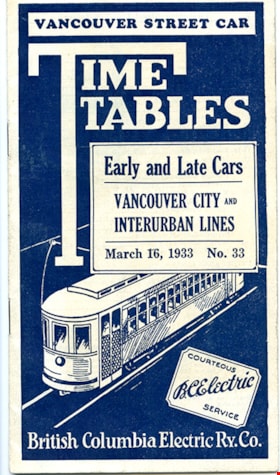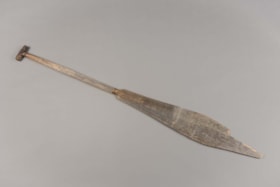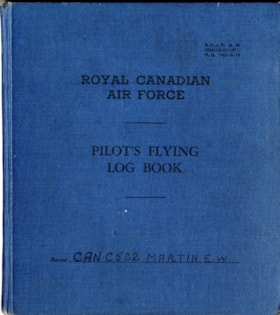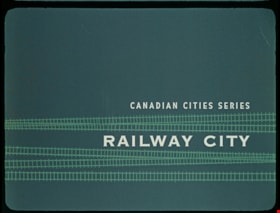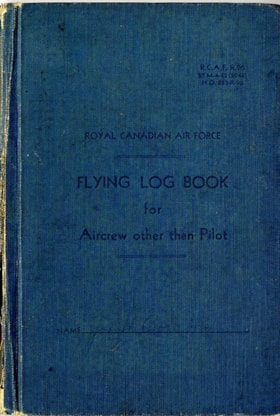More like 'Gilley Brothers Logging team'
Narrow Results By
Creator
- Burnaby Village Museum 2
- Canada. Department of Mines and Technical Surveys. Geographical Branch 1
- Canadian National Railways 1
- Canadian Pacific Railway Company 1
- City of Winnipeg 1
- Damer, Eric 1
- Donoahue, J. 1
- Hopkins, D. 1
- Library and Archives Canada 1
- Malik, Anushay 1
- Manitoba Hydro 1
- Moller, Hans 1
Person / Organization
- Alpha Secondary School 1
- Binning, Dr. Sadhu 1
- Binning, Gurmaje Kaur 1
- Binning, Jagdish 1
- Binning, Jit Singh 1
- Brentwood Park School 1
- Brentwood Shopping Centre 1
- British Columbia Electric Railway Company 1
- Burnaby School Board 1
- Burquest 1
- Canadian Farmworkers Union 1
- Corsbie, Joseph Hardcastle-Cumberland "Joe" 1
Interview with Dr. Sadhu Binning
https://search.heritageburnaby.ca/link/museumdescription19348
- Repository
- Burnaby Village Museum
- Date
- [1931-2022] (interview content), interviewed 25 Nov. 2022
- Collection/Fonds
- Burnaby Village Museum fonds
- Description Level
- Item
- Physical Description
- 3 sound recordings (wav) (75 min., 56 sec.) + 1 sound recording (mp3) (75 min., 57 sec.)
- Scope and Content
- Item consists of an oral history interview with Dr. Sadhu Binning conducted by Anushay Malik with assistance from Burnaby Village Museum Assistant Curator, Kate Petrusa. The interview opens with introductions and how the content of the interview can be drawn on by Burnaby Village Museum for future …
- Repository
- Burnaby Village Museum
- Collection/Fonds
- Burnaby Village Museum fonds
- Series
- Museum Oral Histories series
- Description Level
- Item
- Physical Description
- 3 sound recordings (wav) (75 min., 56 sec.) + 1 sound recording (mp3) (75 min., 57 sec.)
- Material Details
- Interviewer: Anushay Malik Co Interviewer and technical support: Kate Petrusa Interviewee: Dr. Sadhu Binning Location of Interview: Love farmhouse at Burnaby Village Museum Interview Date: November 25, 2022 Total Number of tracks: 3 Total Length of all Tracks: (1:15:57) Digital master recordings (wav) were recorded onto three separate audio tracks, edited and merged together and converted to mp3 for access on Heritage Burnaby
- Scope and Content
- Item consists of an oral history interview with Dr. Sadhu Binning conducted by Anushay Malik with assistance from Burnaby Village Museum Assistant Curator, Kate Petrusa. The interview opens with introductions and how the content of the interview can be drawn on by Burnaby Village Museum for future exhibits and for researchers to learn more about the history of the South Asian community in Burnaby. During the interview, Dr. Binning shares his ancestral background along with his relatives' and his own personal experiences as a South Asian immigrant living and working in British Columbia and Burnaby. Dr. Binning conveys that he’s a Burnaby resident who’s lived in Burnaby since 1973 and that his children were born here. Binning shares his ancestral heritage beginning with his uncle Dhana Singh who emigrated from Punjab to British Columbia in 1931 and began working in the forest industry. He explains how Dhana Singh and another partner owned, operated and worked in small sawmills in the vicinity of Kamloops, Williams Lake and also on Vancouver Island. Binning conveys that in the beginning Dhana Singh and many other South Asian immigrants were not legal residents until 1938. In 1938, about 350 South Asian immigrants (mainly Punjabi) gathered resources to hire a lawyer to obtain permanent residency. Binning mentions that one of the notable South Asians in the group who was also a close friend of his uncle, was Darshan Singh Sangha, a trade unionist who was a founding member of the International Woodworkers of America (IWA) union and an active member of the Communist Party of Canada. Binning conveys how Darshan Singh Sangha returned to India in 1947 to be a part of the revolution, how he was very active in the communist movement in India. While in India, Darshan Singh Sangha, was known as Canadian and thereby adopted “Canadian” as his surname, becoming “Darshan Singh Canadian”. Binning further explains that his uncle Dhana Singh Sangha returned to India in 1951, married and came back to B.C. in 1957 bringing with him, his wife and children. In 1960, with the support of his uncle, Binning’s father, Jit Singh Binning immigrated to British Columbia and began working in sawmills in the lower mainland, Kamloops, Quesnel and on Vancouver Island. Binning clarifies that his uncle, Dhana Singh was able to immigrate to Canada with the support of his cousins from the Tarker Singh Bains family. Binning further describes Darshan Singh Sangha’s involvement with the Communist party and the IWA and how the majority of the members were from the forest industry. As an active and prominent member of the labour movement, Darshan Singh Sangha fought for the rights of South Asians and Chinese who working in the industry and facing racism, unfair wages and discriminatory practices. Binning describes how Darshan Singh Sangha wrote a book in English in 1943, titled “Rise of the New Asia”. Binning conveys how immigrants of Chinese and South Asian decent didn’t have the right to vote in British Columbia and how Darshan Singh Sangha was instrumental in obtaining the right to vote in British Columbia, although he was never given the credit. Binning describes his uncle Dhana Singh as a likeable guy with many friends, first living in Kamloops before moving to Vancouver. Binning imparts how the sport of wrestling is a popular Punjabi sport along with Punjabi kabaddi. He conveys that his uncle became involved in wrestling while working in sawmills. South Asian immigrants had to do physical labour working in sawmills, the work could be tough and could often lead to physical fights. A number of South Asian immigrants working in the mills already had experience as wrestlers from back home. Dhana Singh later left the lumber industry to work in the agriculture sector. Binning explains how immigration rules changed in the 1960s which lead to larger numbers of South Asians immigrating to Canada. Many of these new immigrants were educated and politically conscious. All of these new immigrants faced racism but being politically conscious from an independent India and with the ability to speak English they organized themselves to fight for their rights. Binning imagines the items that his uncle and his father may have brought with them in their suitcase when immigrating to Canada. Binning describes three items, including a rajai (a blanket with cotton inside that is sewn together), a bistra (small attaché case or trunk) and a piece of cloth to lie on. Binning further describes the roles in Indian society as caste divisions and that it was usually women’s work in making the rajais. Binning recollects the locations that his father and his family lived after coming to Vancouver. Binning explains that a few years after living together in Vancouver, he and his family moved to Burnaby in 1973 to be closer to his Dr. Binning’s wife, Jagdish Binning’s family. Dr. Binning and family lived in a house in Burnaby located on Irmin Street near Royal Oak between 1973 and 1987. While living at this house their children attended McPherson Park Junior High School and later Burnaby South Secondary School. Binning reflects on some of the racism that he and his family have faced while living in Burnaby which led him to write a poem that he published in 1994 titled “No More Watno Dur”. Binning explains the meaning of the title “Watan” meaning “country and everybody” “a country far way from the motherland”. Binning explains the origins of the magazine “Watan” that was started by a friend in 1973. The magazine got its roots in Vancouver in 1973 from an organization called the “Punjabi Literary Association”. Binning became the editor of the magazine in 1976 and his friend joined him as assistant editor in 1978. Binning continued to work as editor until 1983 or 1984 when he returned to school to complete his Bachelor’s degree and Master’s degree. Binning describes the origins of the “Vancouver Sath” that was formed by a small group of South Asians around 1982. Binning was a founding member of the organization and held meetings and rehearsals at his house in Burnaby. Vancouver Sath first started out as an informal discussion forum by a group of politically conscious Punjabi writers and activists. Binning talks about issues and problems that Vancouver Sath addressed including; racism as well as domestic violence in the South Asian community. Binning explains how he and Sukhwant Hundal wrote articles on these issues and others that were happening in the South Asian community in Canada. Binning talks about how in 1983, the group was inspired to begin performing theatrical works after consulting with Gursharan Singh who was from a well known theatrical group from Punjab who were performing in Vancouver. In the beginning the Vancouver Sath’s plays were focused on the problems in Punjab but they soon decided to address social issues in their own South Asian community here in Canada. Binning summarizes and draws attention to, some of the plays that Vancouver Sath has written and performed including; “Picket Line”, about Punjabi women farmworkers’ rights; “Lattan de Bhoot”, about domestic abuse; “A Crop of Poison”; “Kihda Viah” (English translation- “Whose Marriage”) about arranged marriage and others about social issues in the South Asian community. The plays were performed in public schools and community centres in Vancouver and Richmond, Simon Fraser University and some were also performed in Toronto, Calgary and Williams Lake. Binning mentions some of the traditional foods that he likes to eat and where he and his family have shopped to find ingredients. He recalls how his mother, Gurmaje Kaur Binning did all of the cooking and was often cooking all day long. In the sixties, the Binning family address on 13th Avenue in Vancouver was also used as a postal address for many friends and family who’d recently immigrated. When these friends dropped by to pick up their mail, his mother often provided them with tea and food. After Binning and his wife, Jagdish moved to their own home in 1973, he shared in some of the shopping and cooking but his wife did the majority of the work due to his busy schedule. The interview closes with Binning providing an explanation of how “Watno Dur” magazine changed it’s name to “Watan” magazine. Binning reflects on how this came to be, when he made the decision to get an education in Canada and to stay here, not just as a “Canadian” but as a “Punjabi Canadian.
- History
- Interviewee biography: Dr. Sadhu Binning was born on May 10, 1947 to mother Gurmej Kaur and father Jeet Singh Binning. Due to lack of proper records management in India at the time of his birth, it is believed that he was actually born sometime in December of 1947. He grew up alongside two brothers and one sister in a village located in Kapurthala, Punjab. Dr. Binning attended secondary school in the nearby city of Phagwara, Punjab although he did not complete his education here. Throughout his childhood, he enjoyed reading both Punjabi and Hindi novels and learned how to read Urdu as well. Dr. Binning’s uncle, Dhana Singh immigrated to Canada in 1933 and returned to India in 1953. When Dhana Singh returned to Canada in 1957, he sponsored Dr. Binning’s father, Jeet Singh Binning to immigrate. Dhana Singh co-owned a few saw mills in British Columbia and also worked in the truck driving industry. Dr. Binning remembers that some people who had lived in Canada would visit their village and that they appeared to be strong and healthy and looked happy. He also noticed that they would eat meat, so whenever they would visit there would be meat available. In 1967, when he was nineteen and a half years old, Dr. Binning immigrated Canada to join his father. He recalls his father and uncle and a friend arriving at the airport to pick him up. During his first few days, Dr. Binning made the decision to remove his turban and beard upon receiving advice from his uncle. Dr. Binning first obtained work on a farm in Abbotsford, working alongside his mother. While working, Dr. Binning also attended English classes in Vancouver. Dr. Binning’s Uncle Dhana Singh worked in a Vancouver saw mill and tried to help find work for his nephew but was unsuccessful. Dr. Binning soon found work at a saw mill in Avola and worked there until the end of the summer until a friend helped find him work in a saw mill in North Vancouver. During his free time, he enjoyed camping with friends. In 1970, Dr. Binning left the saw mill after obtaining a job at the post office. The post office offered lower wages than working at the mill but Dr. Binning believed that he would become more educated working here. While working as a postman, Dr. Binning recalls facing a lot of discrimination and racism and was often referred to as a ‘Paki’ multiple times a day. In 1973, Dr. Binning married Jagish Sihota. Sadhu and Jagdish originated from nearby villages in India and met each other in Canada. Dr. Binning’s wife, Jagdish worked at the Royal Bank of Canada for thirty years until her retirement. While working, she also looked after the household and their son and daughter. Jagdish also handwrote a magazine, “Watno Dur’ (English translation: ‘away from homeland’) which was distributed in the community. In 1976, Dr. Binning became the editor of the magazine and the name was later changed to “Watan’ as they had accepted their new homeland of Canada. While working at the post office, Dr. Binning also attended night school starting in eighth grade. After receiving his high school diploma, he was accepted to Simon Fraser University and earned a Bachelor of Arts degree with a double major in Anthropology and Sociology and in 1986 he obtained a Masters degree from Simon Fraser University. While attending university, Dr. Binning was very active within the community and wanted to work to improve society. He first thought that he would return to India to contribute and improve rights in his homeland but upon seeing the prevalence of the movements in Canada, he realized that work needed to be done here too. In 1983, Dr. Binning became a founding member and contributor to a theatrical collective known as “Vancouver Sath”. The theatrical group produced plays that represented societal issues and were invited to perform at multiple conferences throughout British Columbia and Canada. The group focused and acknowledged the many issues in Punjab and in Canada. One of the plays that the group produced focused on the exploitation of Punjabi women who worked on farms in Canada. Dr. Binning continued to be involved as an integral member of Vancouver Sath until 1995. Over the years, Dr. Binning has strongly lobbied for Punjabi language education and between 1988 and 2008 he worked as Punjabi instructor at the University of British Columbia. He first worked as a teaching assistant at UBC under Dr. Harjot Oberoi and due to low wages, he simultaneously worked at the Post Office. In 2019, Dr. Binning received an Honorary Doctor of Letters from UBC in recognition of his work. Since 1973, Dr. Binning has lived in Burnaby and has resided in the same home that he and his wife Jagdish purchased in 1987. In his free time, he enjoys cycling, watercolour painting, travelling abroad and going on road trips. Interviewer biography: Anushay Malik is labor historian with a geographical focus on South Asia. Anushay studied at the University of London and was a research fellow at the International Institute of Social History in Amsterdam, Netherlands. In 2014, Anushay moved back to her native Pakistan and joined Lahore University of Management Services as an Assistant Professor. In 2023, Anushay is a visiting scholar at Simon Fraser University and lives in Burnaby with her family. Anushay was a co-curator of the Burnaby Village Museum exhibit “Truths Not Often Told: Being South Asian in Burnaby”.
- Creator
- Burnaby Village Museum
- Subjects
- Industries - Logging/lumber
- Industries - Forestry
- Foods
- Migration
- Organizations - Societies and Clubs
- Organizations - Unions
- Persons - South Asian Canadians
- Performances
- Performances - Dramatic Performances
- Social Issues
- Social Issues - Racism
- Names
- Binning, Dr. Sadhu
- Binning, Gurmaje Kaur
- Binning, Jit Singh
- Binning, Jagdish
- Sangha, Darshan Singh
- Canadian Farmworkers Union
- Hundal, Sukhwant
- Sangra, Harjinder
- Singh, Dhana
- Vancouver Sath
- Responsibility
- Petrusa, Kate
- Malik, Anushay
- Accession Code
- BV022.29.3
- Access Restriction
- No restrictions
- Reproduction Restriction
- No known restrictions
- Date
- [1931-2022] (interview content), interviewed 25 Nov. 2022
- Media Type
- Sound Recording
- Notes
- Title based on contents of item
- Transcription available on Heritage Burnaby
Documents
Audio Tracks
Interview with Dr. Sadhu Binning, [1931-2022] (interview content), interviewed 25 Nov. 2022
Interview with Dr. Sadhu Binning, [1931-2022] (interview content), interviewed 25 Nov. 2022
https://search.heritageburnaby.ca/media/hpo/_Data/_BVM_Sound_Recordings/Oral_Histories/2022_0029_0003_004.mp3Maps of Canada Series - Forest Areas
https://search.heritageburnaby.ca/link/museumlibrary7532
- Repository
- Burnaby Village Museum
- Publication Date
- c1952
- Repository
- Burnaby Village Museum
- Collection
- Special Collection
- Material Type
- Photograph
- Accession Code
- BV016.7.6
- Place of Publication
- Ottawa
- Publisher
- National Film Board of Canada
- Publication Date
- c1952
- Physical Description
- 21 photographs : filmstrip ; cellulose aacetate, b&w pos.
- Library Subject (LOC)
- Documentary Films
- Filmstrips
- Forests and forestry--Canada
- Object History
- Came in with Oakalla Prison records and artifacts in 1991. Filmstrip was utilized by staff and inmates of Oakalla. Digitized by BVM into preservation and accessible formats in 2020.
- Notes
- Filmstrip (illustrations and text) provides a brief synopsis identifying Canada's forest regions and species in the Maritime Provinces; Quebec; Ontario; Prarie Provinces; British Columbia and Northern Areas along with the "Value of Forest Products by Province - 1948".
Images
Documents
Interview with Bill Gruenthal
https://search.heritageburnaby.ca/link/museumdescription19636
- Repository
- Burnaby Village Museum
- Date
- [1950-2023] (interview content), interviewed 31 Jul. 2023
- Collection/Fonds
- Burnaby Village Museum fonds
- Description Level
- Item
- Physical Description
- 2 sound recordings (wav) (74 min., 37 sec.) + 1 sound recording (mp3) (74 min., 37 sec.)
- Scope and Content
- Item consists of a recording of an oral history interview with Bill Gruenthal conducted by Burnaby Village Museum Registrar, Eric Damer on July 31 2023. 00:00:00 – 00:27:01 Bill Gruenthal provides details on his family background, his early life experiences, how he got into the insurance business,…
- Repository
- Burnaby Village Museum
- Collection/Fonds
- Burnaby Village Museum fonds
- Series
- Museum Oral Histories series
- Subseries
- Many Voices Project Interviews subseries
- Description Level
- Item
- Physical Description
- 2 sound recordings (wav) (74 min., 37 sec.) + 1 sound recording (mp3) (74 min., 37 sec.)
- Material Details
- Interviewer: Eric Damer Interviewee: Bill Gruenthal Location of Interview: Burnaby Village Museum Interview Date: July 31, 2023 Total Number of tracks: 1 Total Length of all Tracks: 01:14:37 Digital master recordings (wav) were recorded onto two separate audio tracks, edited and merged together and converted to mp3 for access on Heritage Burnaby
- Scope and Content
- Item consists of a recording of an oral history interview with Bill Gruenthal conducted by Burnaby Village Museum Registrar, Eric Damer on July 31 2023. 00:00:00 – 00:27:01 Bill Gruenthal provides details on his family background, his early life experiences, how he got into the insurance business, his knowledge and interest in Judaism, places that he and his wife lived before moving to Burnaby, family life in Burnaby and his political involvement in running for the Burnaby school board. 00:27:02 – 00:42:50 Bill Gruenthal talks about the Burquest Jewish Community Association, it’s background and his involvement, experiences of discrimination in his career, a brief history of the Jewish people and some cultural traditions. 00:42:51 – 00:56:04 Bill Gruenthal mentions some of the charities that he supports including Burnaby Hospital, his volunteer work within the community and community organizations including the Nikkei Place Foundation and shares more details on his insurance career. 00:56:05 – 01:14:37 Bill Gruenthal shares information about his Burnaby neighbourhood and Jewish funeral customs and provides his impressions of new development at Brentwood, Burnaby Council and other development projects in Burnaby.
- History
- Interviewee biography: Bill Gruenthal was born in the British Mandate of Palestine, now Israel, in 1935 after his parents had fled Germany in advance of the then worsening political situation. Bill’s father died in 1942; some years later his mother remarried to an Irish-born senior civil servant in that government. He had a difficult and somewhat dangerous job. Soon after marriage, the family, including Bill’s older brother, Martin, immigrated to Canada in January 1947 on the strength of his step-father’s British Passport. They traveled via New York, where Bill’s uncle and his family resided and who put up the family. Later that month, the parents travelled by CP rail from Montreal to Vancouver, followed by Bill and his brother in March 1947 who travelled from New York to White Rock on an American railroad. While passing through the Fraser Valley Bill’s parents took an interest in Silverdale, a small hamlet west of Mission where the four eventually settled. Bill finished High School in Mission and soon joined the insurance industry. Bill connected with the Jewish Community in Vancouver where he met his soon-to-be wife. Upon marriage they were transferred to Calgary; after five years suffering its cold weather they were transferred back to Vancouver. They settled in Burnaby in 1966 as an affordable neighbourhood with easy access to his office downtown Vancouver. Outside work, Bill helped raise his family of three daughters who all graduated Burnaby High School (Alpha). They joined Temple Sholom in Vancouver, and he volunteered and still volunteers for a number of non-profits, including The Jewish Museum and Archives and Nikkei Place Foundation (Burnaby). He was an early long-term supporter and a past president of Burquest Jewish Community Association, mostly involving persons from Burnaby, New Westminster, and the Tri-Cities area (hence the name). He ran for political office in Burnaby in 1976 but was not elected. He delivers food in Burnaby for the Food Bank and is a donor to many worthy causes including Burnaby General Hospital. Interviewer biography: Eric Damer is a Burnaby Village Museum Interpreter, Museum Registrar, Researcher and Blacksmith. Eric pounded hot steel for the first time in 1977 in junior high. Fifteen years later, he joined Burnaby Village Museum where he has smithed for three decades. He also provides historical research for museum exhibits and special projects. Outside the museum, Eric is a social historian with a special interest in educational history.
- Creator
- Burnaby Village Museum
- Subjects
- Migration
- Persons - Jewish Canadians
- Transportation
- Transportation - Rail
- Religions - Judaism
- Cemeteries
- Organizations
- Elections
- Names
- Gruenthal, Bill
- Gruenthal, Noemi Yadlow
- O'Connor, Herta Ingrid Gruenthal
- O'Connor, John
- Burquest
- Jacobson, Max Alec
- Temple Shalom
- Brentwood Shopping Centre
- Brentwood Park School
- Alpha Secondary School
- Burnaby School Board
- Responsibility
- Damer, Eric
- Accession Code
- BV023.16.14
- Access Restriction
- No restrictions
- Reproduction Restriction
- No known restrictions
- Date
- [1950-2023] (interview content), interviewed 31 Jul. 2023
- Media Type
- Sound Recording
- Planning Study Area
- Brentwood Area
- Notes
- Title based on contents of item
- Transcription available
Documents
Audio Tracks
Interview with Bill Gruenthal, [1950-2023] (interview content), interviewed 31 Jul. 2023
Interview with Bill Gruenthal, [1950-2023] (interview content), interviewed 31 Jul. 2023
https://search.heritageburnaby.ca/media/hpo/_Data/_BVM_Sound_Recordings/Oral_Histories/2023_0016_0014_003.mp3schedule
https://search.heritageburnaby.ca/link/museumartifact25116
- Repository
- Burnaby Village Museum
- Accession Code
- HV975.19.7
- Description
- Vancouver Street Car Timetables - Booklet -- [1933]. The cover is blue and white with a drawing of a street car. "VANCOUVER STREET CAR/ TIME TABLES". This schedule shows street car and interurban tram times and includes early and late cars. The schedule is for Vancouver City and Interurban Lines. The timetable was printed for March 16, 1933 by the British Columbia Electric Railway Company.
- Country Made
- Canada
- Province Made
- British Columbia
- Site/City Made
- Vancouver
- Title
- Vancouver Street Car Time Tables
- Publication Date
- March 16 1933
- Subjects
- Documentary Artifacts
- Documentary Artifacts - Booklets
- Transportation
- Transportation - Electric Railroads
Images
Documents
paddle
https://search.heritageburnaby.ca/link/museumartifact16839
- Repository
- Burnaby Village Museum
- Accession Code
- HV980.2.131
- Description
- Men’s paddle carved from cedar wood. The shaft is flattened with a "T" style grip mortised at top The blade is flat with one side of the tip missing. There are other cracks in the blade.
- Object History
- Style of blade indicates it is a man’s paddle, for everyday use (see Barnett 1955:116). Anthropologist Homer Barnett notes: “Paddles were made of yellow cedar, yew, and maple. Those of maple and cedar were painted, the man’s being black and the woman’s red. A smoky pitch fire and oil gave an impenetrable black (116). Men’s paddles had a crutch or crosspiece handle – either one piece or doweled on. There were different shapes of paddles for women, steering, sealing and night hunting.
- Marks/Labels
- "Yale" written on tag.
- Country Made
- Canada
- Province Made
- British Columbia
- Site/City Made
- Yale
- School/Style
- Coast Salish
Images
Documents
Pilot's flying log book
https://search.heritageburnaby.ca/link/museumdescription15039
- Repository
- Burnaby Village Museum
- Date
- 1939-1940
- Collection/Fonds
- Elmer Wilson Martin fonds
- Description Level
- Item
- Physical Description
- 1 book
- Scope and Content
- Item consists of a Royal Canadian Air Force, Pilot's Flying Log Book belonging to Elmer Wilson Martin (Can. C522). Book contains entries between June 29 and December 23, 1939 and January 13 and July 31, 1940 and Sept. 1940. Pilot training took place at Camp Borden where training for pilots, navigat…
- Repository
- Burnaby Village Museum
- Collection/Fonds
- Elmer Wilson Martin fonds
- Description Level
- Item
- Physical Description
- 1 book
- Scope and Content
- Item consists of a Royal Canadian Air Force, Pilot's Flying Log Book belonging to Elmer Wilson Martin (Can. C522). Book contains entries between June 29 and December 23, 1939 and January 13 and July 31, 1940 and Sept. 1940. Pilot training took place at Camp Borden where training for pilots, navigators, air gunners, air bombers and flight engineers for the Royal Canadian Air Force, the Royal Air Force and other Commonwealth air forces. According to the log book, Elmer Martin was trained on various aircraft at this location. Canadian Forces Base Borden is located in Ontario.
- Accession Code
- BV019.37.10
- Access Restriction
- No restrictions
- Reproduction Restriction
- May be restricted by third party rights
- Date
- 1939-1940
- Media Type
- Textual Record
- Scan Resolution
- 600
- Scan Date
- February 4, 2021
- Scale
- 100
- Notes
- Title based on contents of item
Images
Documents
Railway City
https://search.heritageburnaby.ca/link/museumlibrary7535
- Repository
- Burnaby Village Museum
- Publication Date
- c[1960]
- Repository
- Burnaby Village Museum
- Collection
- Special Collection
- Material Type
- Photograph
- Accession Code
- BV016.7.9
- Contributor
- Hopkins, D.
- Donoahue, J.
- Moller, Hans
- Canadian National Railways
- Canadian Pacific Railway Company
- City of Winnipeg
- Manitoba Hydro
- Province of Manitoba
- Library and Archives Canada
- Place of Publication
- Ottawa
- Publisher
- National Film Board of Canada
- Publication Date
- c[1960]
- Physical Description
- 52 photographs : filmstrip ; cellulose aacetate, col. pos.
- Library Subject (LOC)
- Documentary Films
- Filmstrips
- Subjects
- Transportation - Rail
- Object History
- Came in with Oakalla Prison records and artifacts in 1991. Filmstrip was utilized by staff and inmates of Oakalla. Digitized by BVM into preservation and accessible formats in 2020.
- Notes
- A Canadian Series educational filmstrip about the history of Winnipeg and its development as a railway city. Visual material was provided by: Canadian National Railways and Canadian Pacific Railway, Montreal; City of Winnipeg Engineering Departments; Manitoba Hydro Electric Board - Winnipeg; Province of Manitoba, Department of Industry and Commerce and The Public Archives of Canada - Ottawa.
Images
Documents
RCAF Flying Log Book and navigation maps
https://search.heritageburnaby.ca/link/museumdescription20321
- Repository
- Burnaby Village Museum
- Date
- 1943-1945
- Collection/Fonds
- Joseph H.C. Corsbie fonds
- Description Level
- File
- Physical Description
- 1 book (hardcover) + 1 map : b&w lithograph on paper with annotations in col. ink ; 34.5 x 40.5 cm + 7 maps : b&w lithograph on paper with annotations in col. ink ; 41.5 x 33.5 cm
- Scope and Content
- File consists of a "Royal Canadian Air Force Flying Log Book for Aircrew other than Pilot" assigned to J.H. Corsbie along with eight aircraft navigation maps for flying at night titled; "Newcastle to Prague" and "Hull to Venice" with navigational markings created by Joseph H. Corsbie. Entries in lo…
- Repository
- Burnaby Village Museum
- Collection/Fonds
- Joseph H.C. Corsbie fonds
- Description Level
- File
- Physical Description
- 1 book (hardcover) + 1 map : b&w lithograph on paper with annotations in col. ink ; 34.5 x 40.5 cm + 7 maps : b&w lithograph on paper with annotations in col. ink ; 41.5 x 33.5 cm
- Material Details
- Scale : 1:2,890,000 (approx.)
- Scope and Content
- File consists of a "Royal Canadian Air Force Flying Log Book for Aircrew other than Pilot" assigned to J.H. Corsbie along with eight aircraft navigation maps for flying at night titled; "Newcastle to Prague" and "Hull to Venice" with navigational markings created by Joseph H. Corsbie. Entries in log book provide detailed records of Corsbie's training and flights undertaken on RCAF service aircraft between March 1943 and July 1945 along with units which Corsbie served as observer or air gunner and the aircraft in which he's flown (1943-1944).
- Other Title Information
- Full title of book "Royal Canadian Air Force Flying Log Book for aircrew other than Pilot"
- Responsibility
- Royal Canadian Air Force
- Accession Code
- BV020.31.44
- Access Restriction
- No restrictions
- Reproduction Restriction
- No known restrictions
- Date
- 1943-1945
- Media Type
- Textual Record
- Cartographic Material
- Scan Resolution
- 600
- Scan Date
- 19-09-2023
- Notes
- Title based on contents of file
- 7 maps titled "Hull to Venice / Heights in Feet" include identifier below bottom border reading: "O.R.1373 / Spot-Height Corrections, 1944"_"Compiled and drawn at H.Q./G.S.G.S.-1943"
- 1 map titled "Newcastle to Prague / Heights in Feet" include identifier below bottom border reading: "O.R.1373 / Spot-Height Corrections, 1944"_" H.Q./G.S.G.S.-1943"
